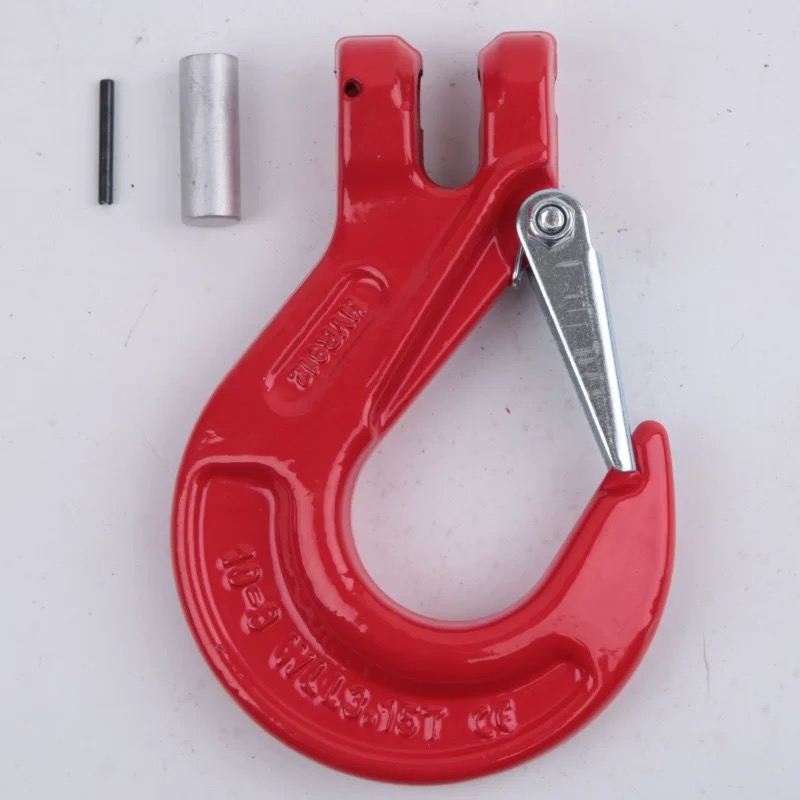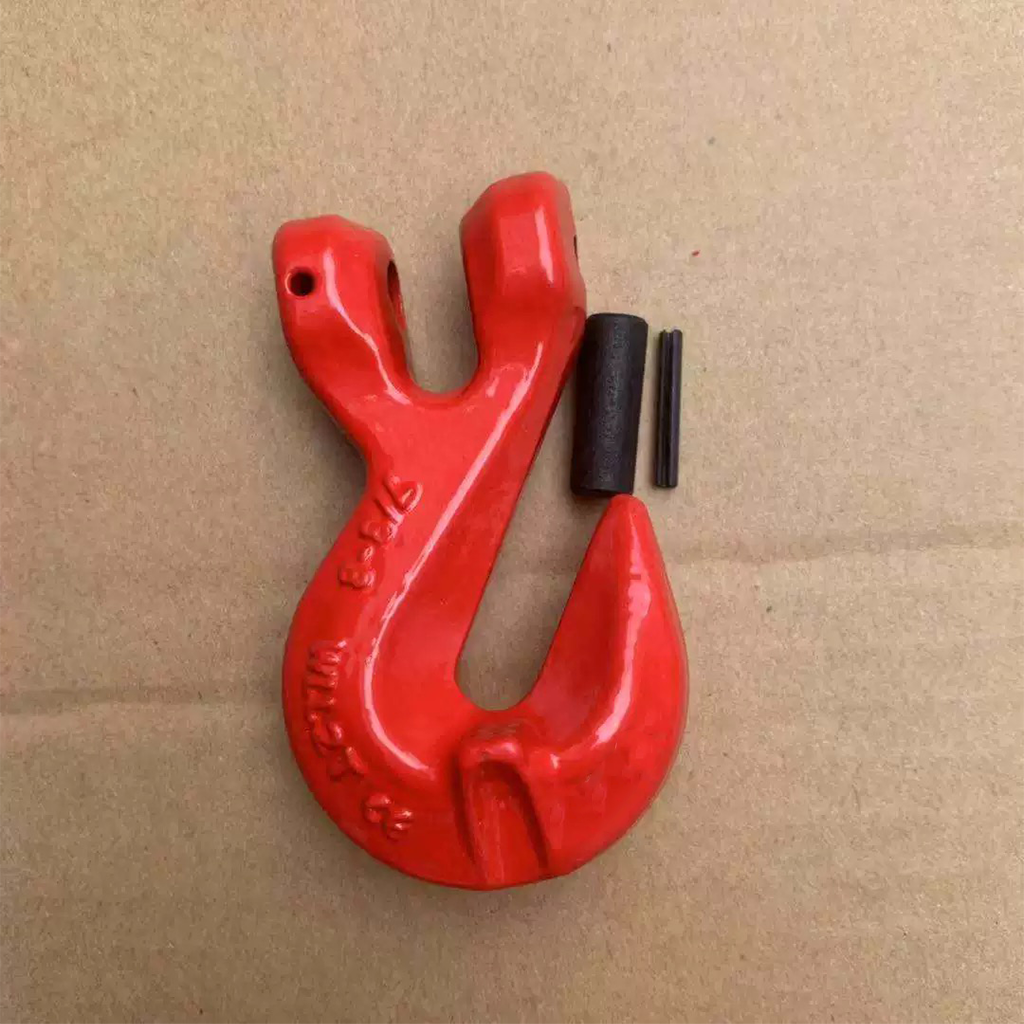Our staff will contact you within 12 hours, You can also contact us through the following ways:
Contact US WhatsApp: +8618766656705
- Email: [email protected]
- Tel: +8618766656705
- Web: https://www.toponechain.com/
Loads shift, angles tighten, and surfaces fight back, so crews need clear rules for chain and hooks for lifting. This guide shows how certified lifting chains and matching hooks work together in shops, yards, and on decks. You will read grade stamps, match standards, pick hook styles by task, and set geometry with numbers rather than guesses. Then you will run fast inspections that keep records clean and jobs moving.


Start with the metal, not the paint. Certified lifting chains carry grade stamps on links (commonly “8” for Grade 80 or “10” for Grade 100) and a size stamp. A sling tag lists Working Load Limits (WLL) by hitch and by angle, plus a serial or batch ID and a maker ID. Hooks and shackles show WLL, size, and manufacturer marks. Standards guide these markings: ASME B30.9 and EN 818-4 cover chain slings; ASME B30.26 and EN 13889 cover shackles and many fittings. Read every stamp and shoot quick photos so traceability stays tight.
l Indoor fabrication and MRO: black-oxide or phosphate Grade 80/100 wipes clean and keeps stamps easy to read.
l Coastal or splash zones: zinc–nickel coated alloy resists salt; rinse and oil pivots after each shift.
l Washdown or chemical plants: stainless 304/316 fights pitting; match stainless hooks and shackles to curb galvanic attack.
l Hot work nearby: follow the temperature curve in the data sheet and log heat exposure for the next inspection.
You pair hook design with motion, access, and risk. Keep the same grade family across chain, hooks, and hardware; the lowest grade sets the limit.
Hook Type | What You Get | Where It Shines | Setup Tip |
Self-locking hook | Latch locks under load and stays shut | Long travel, wind, vibration | Seat the load deep in the bowl |
Clevis grab (shortening) hook | Fast link capture for length trim | Angle control with shorteners | Capture one full link only |
Eye or clevis sling hook w/ spring latch | Quick connects on protected picks | Short, sheltered moves | Check spring action before lift |
Foundry hook (no latch) | Wide throat for big eyes and bars | Specialized installs with watchers | Control swing and avoid side load |
Angle drives leg tension, so measure rather than guess. Hold an included angle near 60° whenever the site allows. Add a spreader or shorten long legs evenly when headroom squeezes.
Two-leg quick check
Tension per leg = Load ÷ (2 × sin θ), where θ equals the angle from vertical of one leg.
Included Angle (between legs) | θ from Vertical | Tension per Leg (×Load) |
30° | 15° | 1.93 |
45° | 22.5° | 1.31 |
60° | 30° | 1.00 |
90° | 45° | 0.707 |
You keep factors handy at the hook, then you size diameter and select hooks from the sling tag’s table.
Create a single path that speaks the same rating from crane hook to load point.
l Fit a master link that clears the crane latch; keep inside width ≥ 5× chain diameter.
l Use hook throat opening ≥ 4× chain diameter so links seat without pinch.
l Add bow shackles when legs may sweep; run the pin through the hardware and face the bow toward the legs.
l Use shorteners or an adjustable head to trim legs and reopen angles.
l Add in-line swivels when loads tend to spin; keep the force in line and avoid side load.
1. Lay out the sling and roll links until grade stamps face up; remove twists.
2. Inspect hooks, shorteners, shackles, and master link; replace scarred or cracked parts.
3. Seat the master link in the crane hook; close the latch and check free swing.
4. Engage hooks in rated padeyes or shackles; align eyes to the line of pull.
5. Snug the rig and measure the angle with a card or an inclinometer.
6. Trim long legs and add guards on sharp radii; hold the plan angle.
7. Lift 150 mm, pause, and re-check latch closure, balance, and clearances.
8. Travel slowly; steer clear of snag points and watch corner guards.
9. Land straight; release tension and unhook in reverse order.
Task | Recommended Hook | Why It Works | Extra Control |
Gearbox or motor move | Self-locking | Latch locks during pauses | Add load leveler for pitch |
Beam or node pick | Self-locking | Secure travel across wind | Fit bow shackles at head |
Panel set with inserts | Self-locking | Limits shake-off at stops | Use shorteners to equalize legs |
Short, protected lifts | Spring-latch sling hook | Fast turnover | Verify latch tension |
Length trim at the hook | Clevis grab/shortener | Holds one full link cleanly | Keep pocket faces smooth |
Run the same checkpoints every shift and keep the records with the sling.
l Tag & traceability: read grade, WLL by hitch and angle, serial, and maker ID.
l Pitch growth: measure five consecutive links under light tension; retire legs that exceed the maker’s elongation limit.
l Crown wear: gauge link diameter; retire legs at the published wear limit.
l Hooks & latches: cycle latches ten times; verify throat opening; reject cracks at saddle or neck.
l Shorteners & shackles: inspect pocket sidewalls and pins; fit cotters on bolt-type shackles; replace bent parts.
l Documentation: photograph stamps and upload the proof-test sheet so audits move fast.
Trusting color over stamps. Read the tag and the steel; treat finish as cosmetic.
Guessing at weight or angle. Pull drawings or scale data and use an angle card.
Mixing grades. Keep chain, hooks, shackles, and shorteners in the same grade family.
Skipping edge protection. Fit guards before the pick, not after the scar.
Tip-loading hooks. Seat loads in the hook bowl and keep lines in plane.
Structural steel and fabrication: sparks fly and edges rub, so certified alloy chain stays reliable while self-locking hooks prevent shake-off.
Precast and yard handling: inserts sit out of plane; shorteners help you equalize legs and hold angles.
Marine and offshore: swell nudges geometry; multi-leg alloy slings and bow shackles keep control when decks move.
Maintenance pulls: levelers and adjustable heads speed alignment without re-rigging.
Read stamps, match grades, measure angles, protect edges, and log inspections, and chain and hooks for lifting will carry demanding work with control and traceability—contact TOPONE CHAIN today for certified chains, matched hooks, and full documentation for your next job.